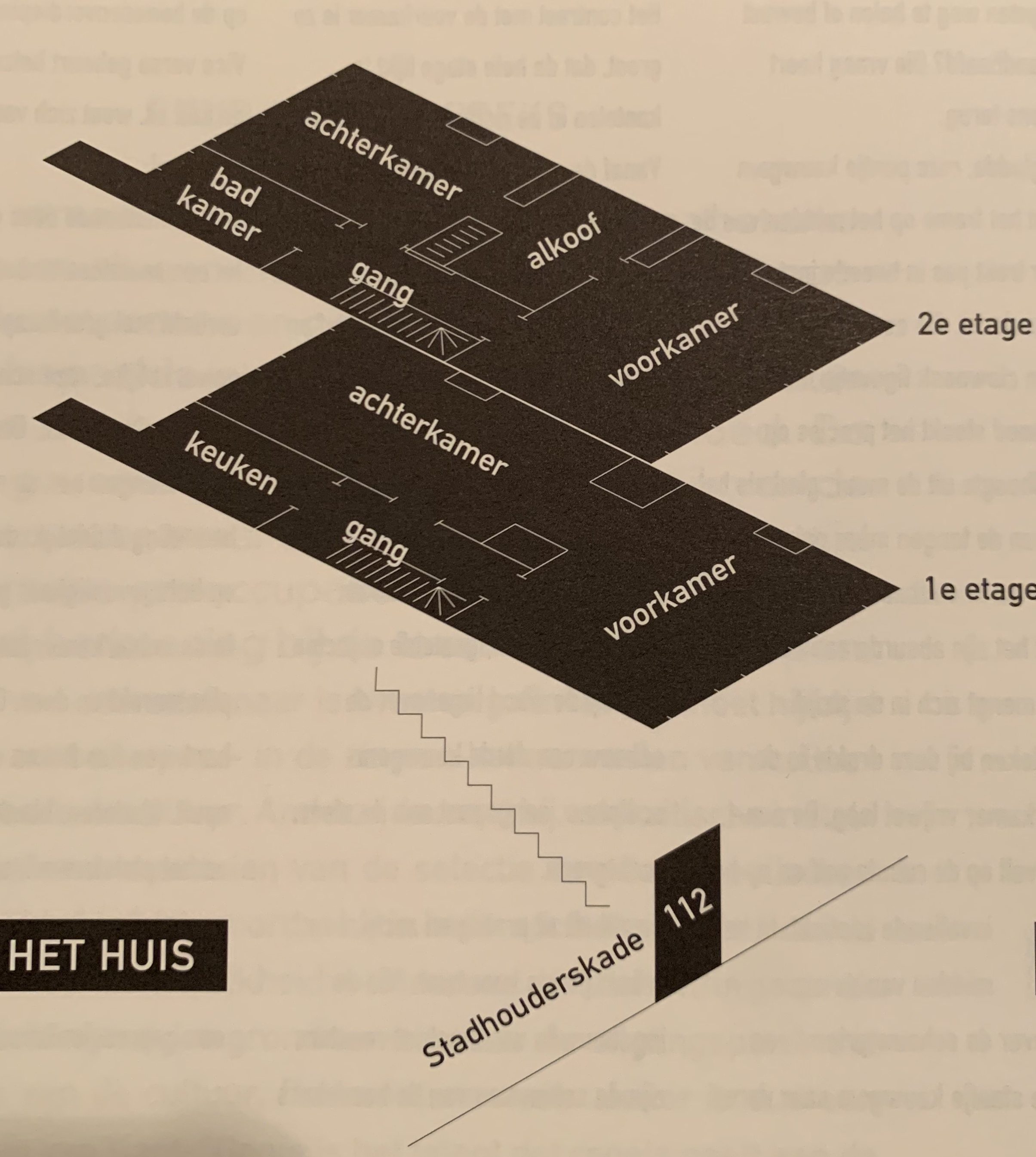




Passersby also notice it. A strange lilac light shines out of the windows on the first floor of Stadhouderskade 112 and mixes with the diffuse November atmosphere.
Inside, the glow continues. Above the dishes in the kitchen, a spooky purple light bulb flickers. The lilac light from the front room sucks you in like a fly to a lamp.
The walls seem to vibrate, the floor glows. There are works of art on the walls, some of them are on the floor: clearly recognisable as a Birza or a bow. This is an exhibition space, but one of the worst kind. The light seems to split: the walls turn pink and the windows green. The atmosphere is so unreal that you fear pure disorientation walking against the windows.
The only way out is a view of the street and the houseboats outside. Contact is made by a silver object against the window. A second 'view' is provided by a tiny monitor mounted against the window. Images of a facade with windows, behind which dancing people are visible, make you a voyeur of an imaginary other side. Through a crack between the suited doors, a line of yellow light falls. A foreboding of the back room, the next zone, but a sheet of glass obstructs the passage. This is a completely different world, although the crack here shows something of the lilac glow.
Bright yellow brushed walls, windows and ceiling create an atmosphere or energy of a squat, dated somewhere in seventies. On the floor a plush, broadloom lilac carpet with one yellow dot, for the suitedeuren sloppy, yellow bouquets and a bottle of advocaat, man-sized glass plates against the wall and on the chimney a tower of egg shells.
It seems as if the space has been stamped on in a hurry. A broken window, a smiley face in the paint on the window and a wire against the wall in the shape of a ballerina. A drawing on the ceiling - a cigar-smoking man, seen from below - hides the attention to the upper floor. On the landing of the second floor a little of the front room is already visible: an enormous baroque bowl with a pyramid of white flowers. But first of all you pass a 'black hole', the ink-black painted attic stairs. You can't climb up, the hatch to the attic is heavier. Moreover, the sweet, wobbly scent of lilies lures into the front room. The flower arrangement resembles both a bridal sugar and a bouquet of mourning.
In the built-in cupboard, four small, super-8 projectors loudly rattling, attract attention. Flickering short loops represent the shadowy figures of the artists, while the glass plate against the wall reflects the image of the viewer.
Then the alcove, dark and menacing. There is a heavy air of oranges, cloves and coffee. Against the walls is a dark brown derrie: coffee grounds. The smell is not unpleasant, the associations are. On the ground a stiff grass-green carpet, in a corner a prickly 'satellite': a sphere, pricked with skewers on which oranges covered with cloves. A sultry room. Coffee grounds and artificial grass continue into the back room. Both stop abruptly in a straight line. After that, nothing remains but a piece of bare room.
Thinking space, peace and quiet, like the white margin of a letter.
(Schwartz, I. (1993) Welcome Stranger, pages 63 and 64)
